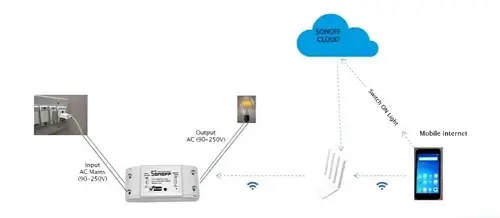Alright, let me take you back to last summer when I decided to give my house a 'smart' makeover. Yep, the full Internet of Things (IoT) treatment. And you know what? One little gadget that impressed me more than I expected was the thermocouple sensor.
You might be thinking, what's so special about a thermocouple? Well, let's just say these little devices do more than just measure temperature. They open up a world of possibilities, especially in the sprawling realm of IoT.
The Unassuming Hero: What Is a Thermocouple?
Imagine this: you're cooking a perfect steak on the grill. Ever wonder how it knows to turn off before it burns? That's where a thermocouple comes in. Simply put, it's a nifty gadget that measures temperature.
A thermocouple is basically two different metals joined together at one end. When this junction experiences a change in temperature, it produces a voltage that can be interpreted as temperature data. This is super helpful not just in grilling but in loads of other scenarios.
Real-Life Stories and Applications
Let’s talk real life here. One of my friends runs a small brewery—perfect place for these sensors! He uses thermocouples to monitor the fermentation process meticulously. Why? Because even slight changes in temperature can affect the quality of the brew. A few degrees off, and your IPA can taste like a disaster rather than divine.
In my own experiment with smart home devices, I installed them to control and monitor heating systems more efficiently. You’d be surprised how much energy (and money!) you save by optimizing your heating system with precise data from thermocouples.
Why Should You Care?
I get it; you’re busy, and maybe diving into technical stuff isn’t your jam. But if you’re tinkering with IoT projects or trying to save some bucks on energy bills, knowing how these things work is invaluable.
- Simplicity: Setting up a thermocouple is straightforward and doesn’t require an engineering degree.
- Reliability: These sensors have been trusted for decades in various industries.
- Diversity: They are used everywhere—from industrial machines to home gadgets.
The Fun Part: Integrating Thermocouples into IoT
This is where things get interesting! Imagine connecting your thermocouple to an Arduino or Raspberry Pi—it’s like giving your house a voice that talks back! You get to know what’s happening around every corner of your home without leaving your couch.
A friend recently set up his garage door to automatically close if the internal temperature dropped below freezing—no more icy cars first thing in the morning!
So Where Do We Go from Here?
If you’ve been on the fence about dabbling into IoT projects or beefing up your smart home kit, consider starting with something simple like a thermocouple sensor. Not only will it provide you with critical insights, but it will also add layers of efficiency to your everyday life.
The next time you're sipping coffee on a chilly morning and your heating system has smartly adjusted itself without wasting energy, you'll thank these unassuming heroes—thermocouples!
So there it is! My two cents on why everyone should consider harnessing the humble yet powerful thermocouple sensor in their IoT endeavors. Ready to take the plunge? I say go for it! And hey, if you've got any cool ideas or experiences with them, I'm all ears!




